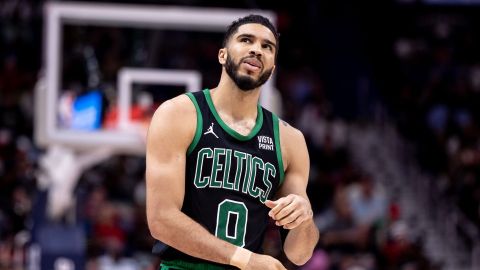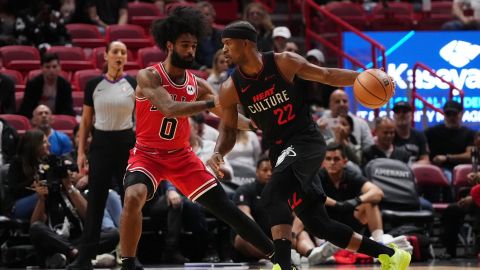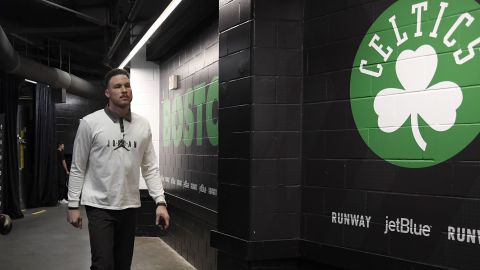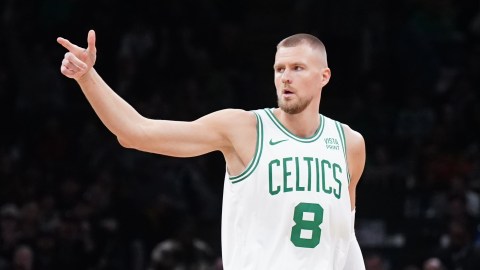 Al Jefferson hit the deck, clutching his back. The most amazing thing was that the frightening-looking injury was not more serious.
Al Jefferson hit the deck, clutching his back. The most amazing thing was that the frightening-looking injury was not more serious.
Jefferson, the 6-foot-10 center who leads the Utah Jazz in scoring and rebounding, is projected to be a game-time decision for Friday’s game against the Raptors after he left Wednesday’s win over Orlando with back spasms. The immediate problem for Jazz coach Tyrone Corbin is how he will set up his frontcourt with Jefferson joining Derrick Favors, who is battling plantar faciitis, on the bench. The bigger-picture problem for general manager Dennis Lindsey is how this adds another complication to the equation as he weighs whether to trade Jefferson, Paul Millsap, both or neither at some point before the trade deadline.
By most accounts, the Jazz need to deal one of their veteran frontcourt players. Both are due for free agency at the end of the season and both are likely to attract big contracts that the Jazz cannot afford together. Utah has prepared itself to refill their positions quickly. Favors has emerged as one of the top defensive power forwards in the game and the organization is adamant that second-year center Enes Kanter is the real deal, lack of evidence notwithstanding.
More than 2,000 miles away, the Celtics would take either in a heartbeat.
The Celtics could use another big man, and they are familiar with Jefferson, who spent the first three years of his career in Boston before he was traded to Minnesota in 2007. Since then, he has blossomed into one of the league’s best low-post scorers and has been just shy of an All-Star game nod for the last five seasons.
Before Celtics fans envision a dream frontcourt of Jefferson alongside Kevin Garnett and Paul Pierce, though, here are some of the many obstacles Danny Ainge would face in trying to acquire the 27-year-old big man.
The Celtics are well above the salary cap and into luxury tax territory this season and next. An aggressive offseason gave the Celtics ample roster depth but also places restrictions on the moves they could make moving forward. The aggregate salaries they bring in through a trade cannot exceed 125 percent, plus $100,000, of the aggregate salaries they send out, per the collective bargaining agreement. That is a difficult floor to reach to acquire Jefferson, who earns $15 million this season.
The luxury tax gets more prohibitive after this season. Trading for Jefferson, as opposed to signing a veteran like Erick Dampier, is done with the intention of re-signing him and building for the future. In the Celtics’ case, that future could get very expensive. If Ainge could somehow finagle a deal for Jefferson, he would face the prospect of trying to sign him next summer under tight conditions. The dollar-for-dollar luxury tax rises to $1.50 per dollar in 2013, along with a $2.50-per-dollar “repeat offender” tax. The tax only gets higher in the following years, when Jefferson’s salary (or any player’s salary) would figure to increase as well.
Jason Terry’s midlevel exception limits how much the Celtics can spend over the luxury tax threshold. Adding Terry for about $5 million annually was a solid move by the Celtics, and it turned out to be crucial when Ray Allen opted to leave for Miami. But the CBA stipulates that a team that uses the midlevel exception cannot go above roughly $74 million in payroll. (They reportedly have about $70 million due in salary this season.) Even if the Celtics got all George Steinbrenner on us and decided to throw their money around, they cannot.
Nothing can happen until Dec. 15. Free agents signed during the offseason cannot be traded until then. Players signed under Larry Bird provisions, which allow teams to exceed the cap to sign their own free agents, cannot be dealt until Jan. 15 at the earliest. For the Celtics, these players with “Bird rights” include Brandon Bass and Jeff Green.
Jefferson now may be sidelined. Let’s say Ainge disregards the venom he would inevitably receive from Celtics fans and deals Pierce to Utah for Jefferson. (This also would require the Jazz to go crazy and decide a 35-year-old small forward with balky knees is worth surrendering a proven post threat in his prime, but this is merely for the sake of argument.) Green shifts into the starting lineup, Garnett welcomes the chance to defer some of the low-post scoring responsibility and Jefferson finally gets a chance to play for a championship contender. Then Jefferson’s back acts up again. This is a significant concern for the Celtics, who are in “win-now” mode for at least the next two years before Garnett’s contract runs out.
There are basketball-related issues to be addressed as well, such as whether Jefferson would be suitable for Boston’s help-heavy defensive system, considering his own limitations in that respect. His passing has improved over the last two seasons, but Doc Rivers would surely cringe if LeBron James and Chris Bosh blanketed Jefferson on the block in a crucial possession late in a playoff game. There is also some doubt as to how valuable a traditional, back-to-the-basket scorer is in the modern NBA.
These concerns are moot, however, because of the hurdles the hard math puts in Boston’s way. Jefferson might look like a perfect fit for the Celtics on the court, but on the balance sheet he is a big, square peg for a team with a very small, round hole.
Have a question for Ben Watanabe? Send it to him via Twitter at @BenjeeBallgame or send it here.



